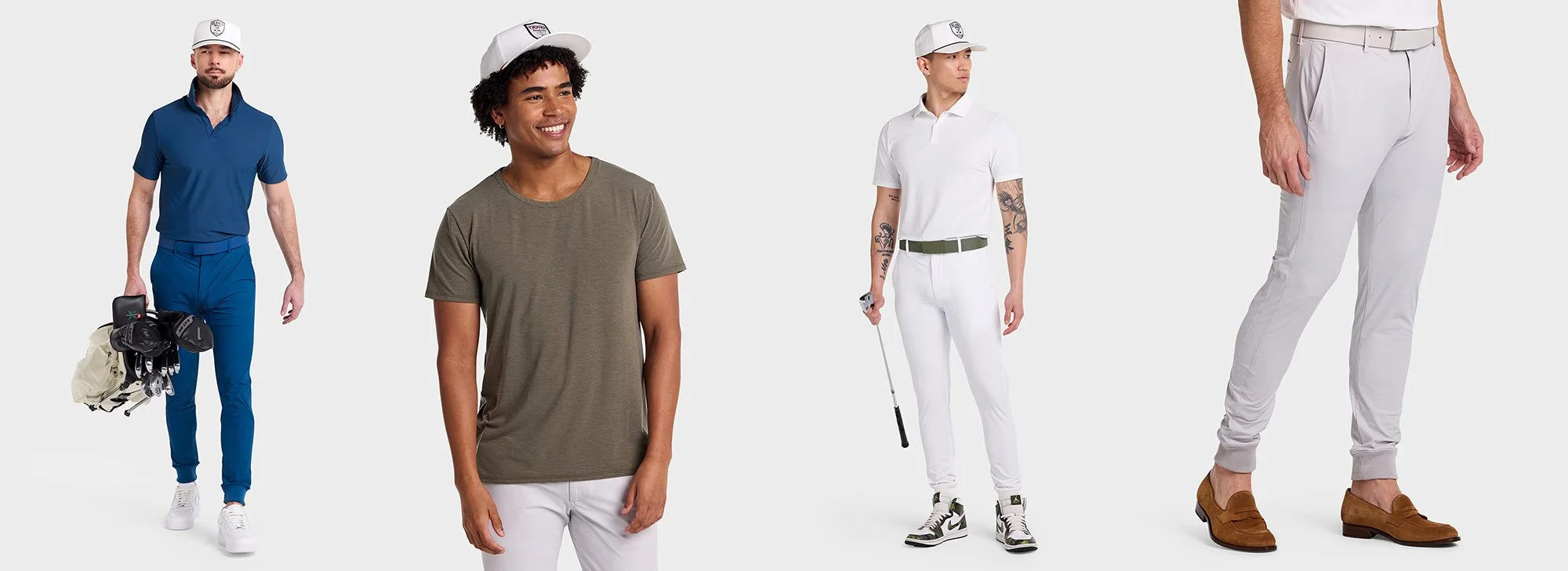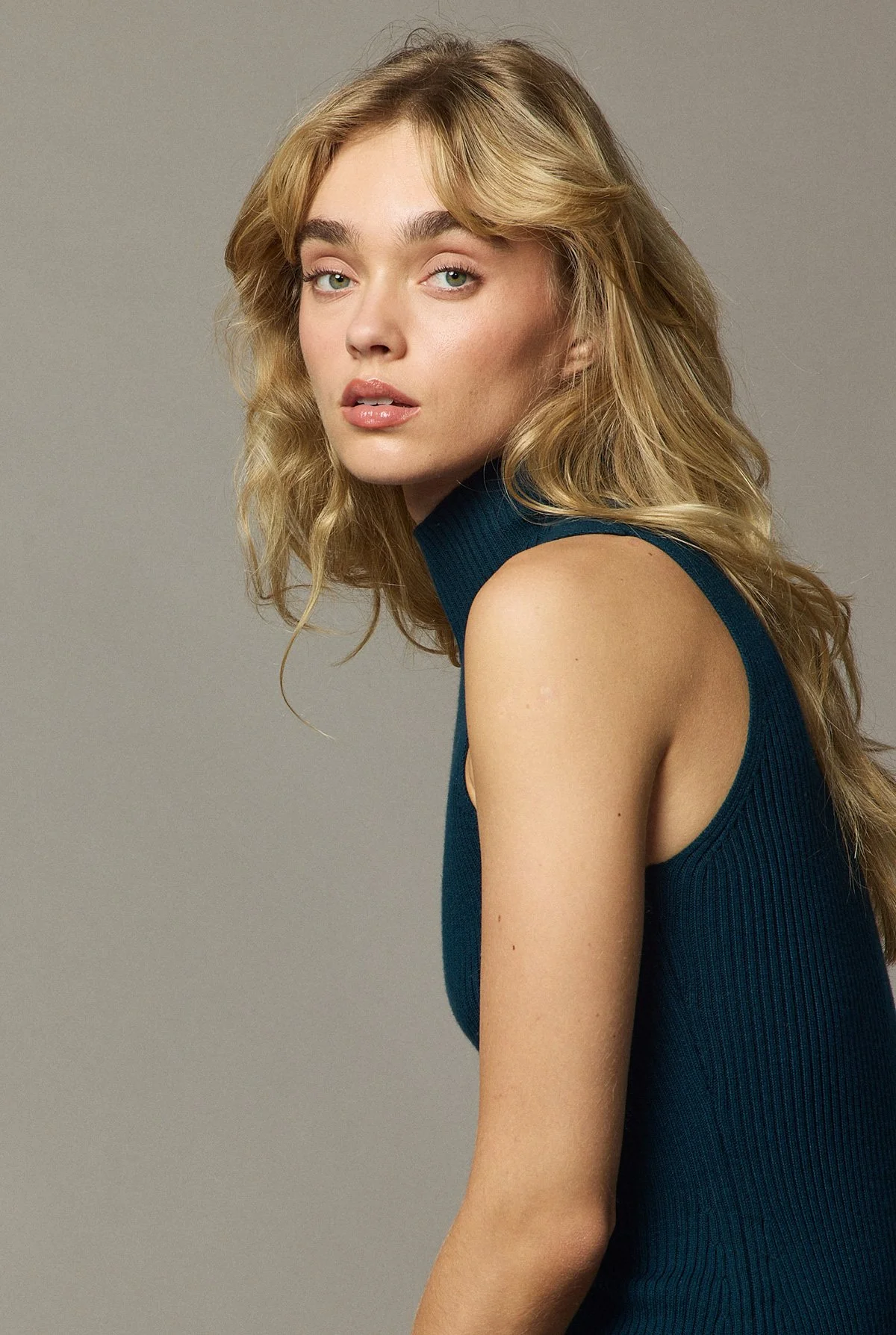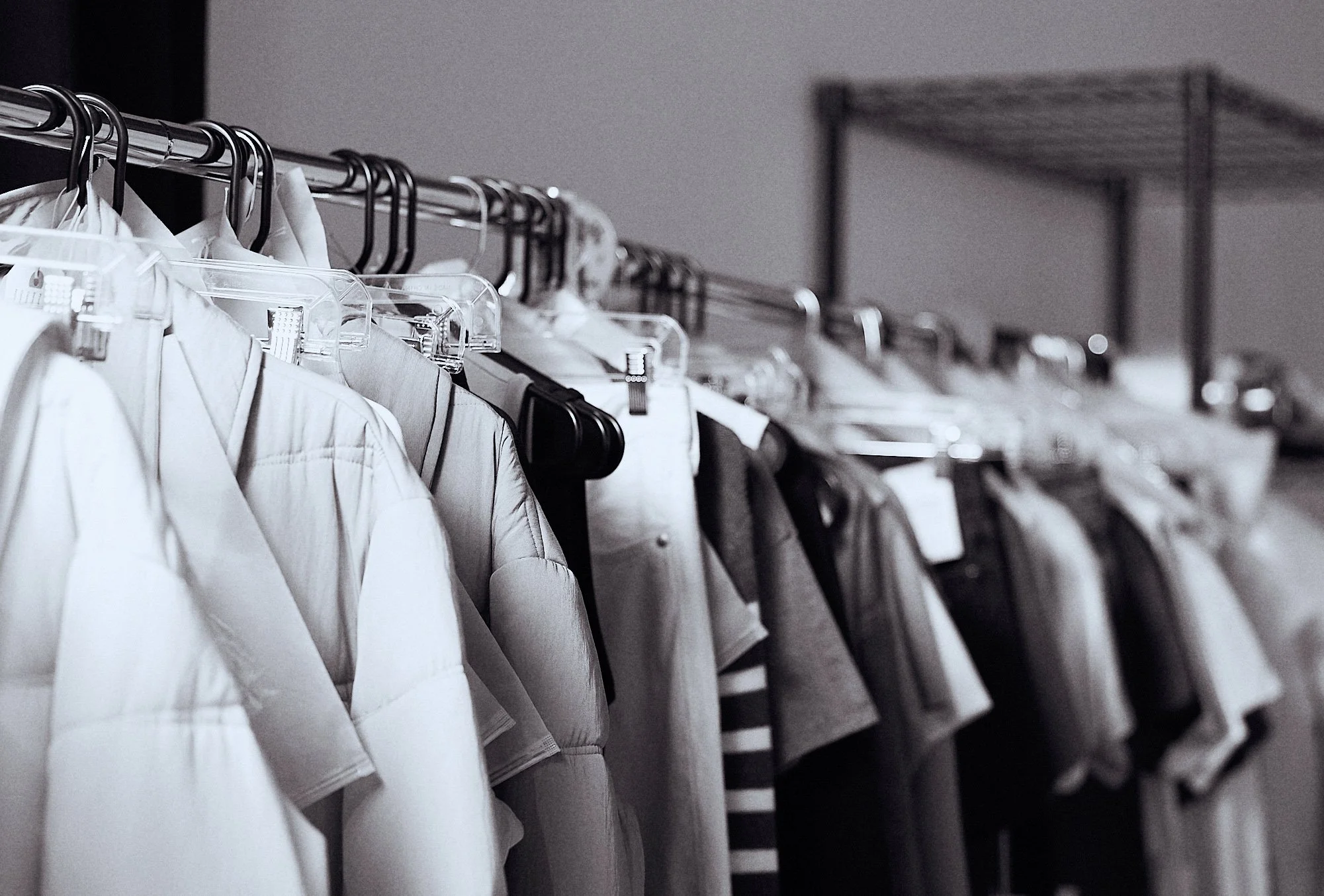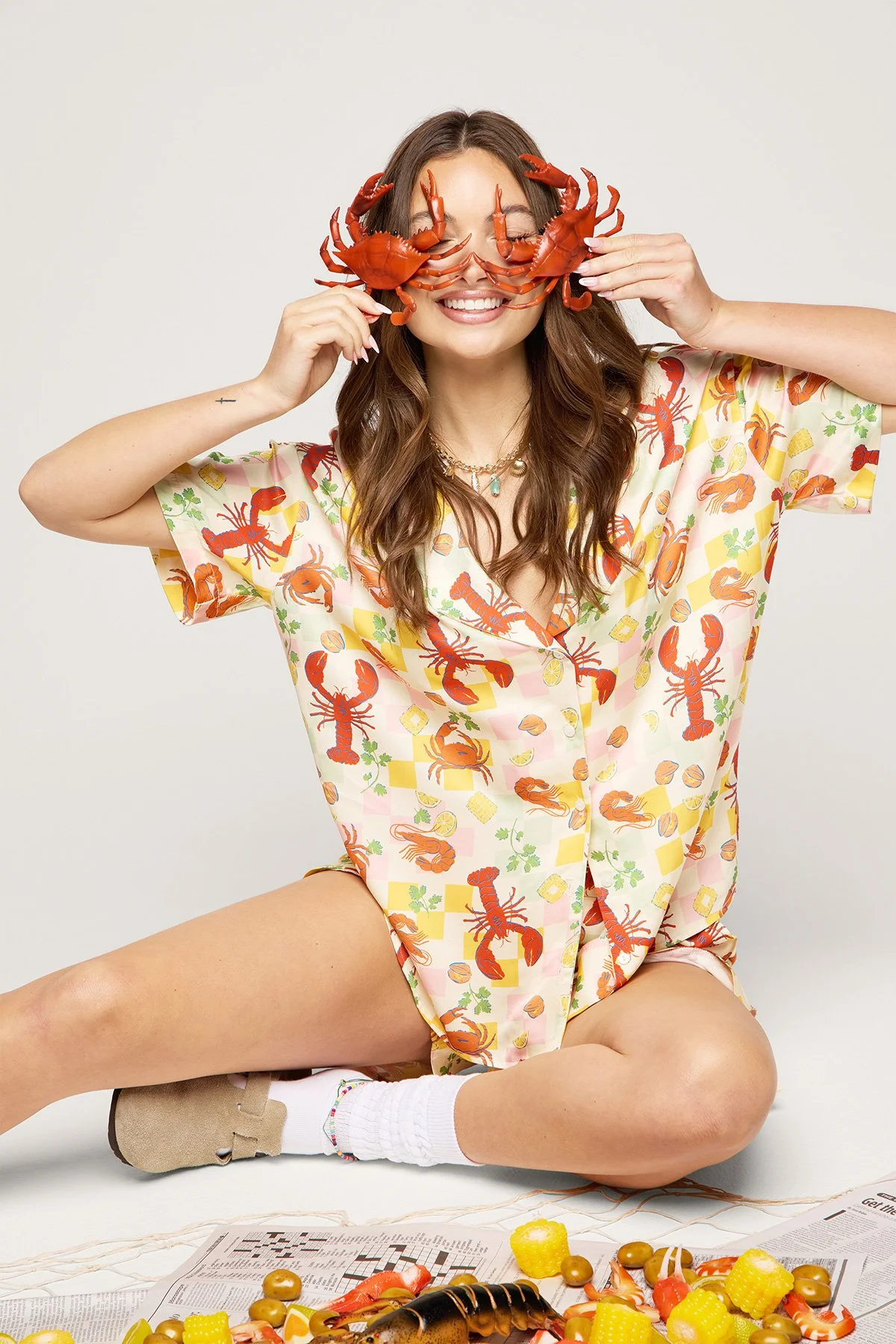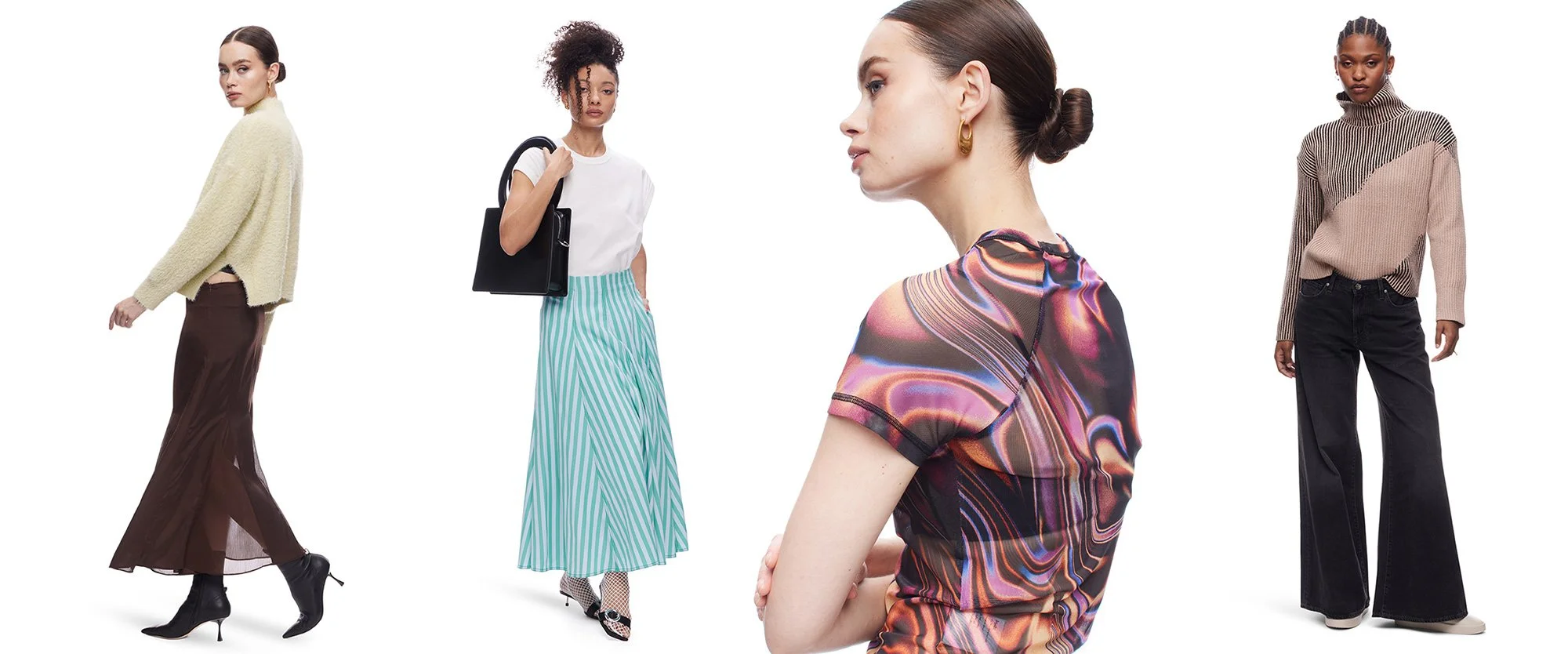The Power Of On-Model Photography for E-Commerce - How To Elevate Your Product Page Imagery
Why On-Model Photography is a Powerful E-Commerce Tool
On-model e-commerce photography can be a powerful tool to connect with your customers and drive conversions in the fashion industry.
Not only does on-model photography bring context to your product by seeing how it is worn or used, but it can add an aspirational element to your content, helping your customers envision themselves that much better if they make that purchase.
Off-model e-commerce photography (such as flat lay photography and ghost mannequin photography) can be a beautiful, clear, and agnostic photography approach—appealing to a wide audience—but it lacks a relatable human connection with your customer.
Even if the model is a much different size, has a different skin tone or generally looks different from the potential customer, being able to visualize the fit on a real person provides that real-life context and helps the customer connect the dots: Is the shirt slim fitting or loose? Will the pants sit low or high on the hips? What is the consistency of the lotion on skin? Or the lipstick on lips?
Having these questions answered through high-quality product photos will build a trust that encourages potential buyers to pull the trigger and provides an extra layer of accurate product representation, which will reduce returns.
How to Organize an On-Model Photography Shoot for Fashion Brands
Producing an on-model product photoshoot should be well thought out and organized so that your time and money aren’t wasted. Find an e-commerce photo studio that has the resources and skills to put together a team that can match your brand vision and capture your product in a way that speaks to your customer.
On-model e-commerce photoshoots are a collaborative and creative process, so it’s important that you have a team that works well together and has experience in the specific type of photography and styling you’re looking for.
The On-Model Photography Crew
Standard on-model e-commerce photoshoots have the following crew members on-set to make a successful shoot:
Photographer - Takes the photos and leads the shoot
Digi Tech - Assists the photographer with capture and set up
Wardrobe Stylist - Puts together looks, dresses the models, and ensures the product looks its best in the shot
Styling Assistant - Steams the apparel, prepares the next look, and keeps samples organized
Hair/Makeup Stylist - Styles the model’s hair and makeup and keeps the model looking their best throughout the shoot
Producer - Manages the crew, talent, and samples and keeps the shoot on track
Art Director - Makes approvals and directs the overall look of the shots
Choosing the Right Model
Don’t underestimate the power of the model–there’s a reason professional models are typically the highest paid person on-set.
A good fashion model may be beautiful but more than that, they are professional, can work efficiently, and are an expert at being in front of a camera. The model is the face of your brand and the person your customer will connect with.
An experienced e-commerce photo studio should have the resources to cast and source models that are specific to your brand aesthetic. The casting process can take time but knowing and understanding your target customer, who they are, and who they aspire to be, is the key to finding the right model. Before you begin casting make decisions on the overall look, age range, size, budget, and usage. Let all decision makers at your company weigh in as different perspectives will help give you a holistic perspective. An experienced e-commerce photo studio can help give a wider perspective on what’s available, who does what (best), and how to navigate the model hiring process.
Pre-Production: Planning On-Model Shoots
Pre-production is a critical piece of the shoot and if not done properly can have a ripple effect that impacts the entire shoot through post production. Pre-production for on-model e-commerce product photography is the planning phase and may include:
Casting - Finding the right model for your brand
Shot List Creation - At its core, a shot list should be a list of SKUs that need to be shot and the shots needed for each SKU. Shot lists may also include categories that can correspond to a style guide, specific styling or shooting notes, and additional product data to be used for file-naming and/or image metadata
Style Out - A designated time prior to the shoot to put looks together and to see how products will be styled for the shoot; this may be a low-production shoot with a fit model or simple ghost mannequin or flat lays
Sourcing - Shopping for any additional pairing items needed to complete your looks (shoes, jewelry, props, etc.)
Call Sheets - To ensure everyone shows up at the proper time and place and to set a clear, defined schedule for the shoot
Sample Check-In - Checking samples against the shot list to ensure everything needed for the shoot is in hand and ready to go
Style Guide and/or Creative Brief - Lighting, background, cropping, angles, and model posing/expressions, discussed and confirmed prior to the shoot; this should be done with a detailed style guide or creative brief with images and descriptions
The pre-production stage sets you up for success to ensure that everything gets shot and shot accurately. The last thing you want to do is to put together a large, talented team and walk away without getting the shots you need. When done correctly, it sets up the entire shoot for success—the team will move through the shoot efficiently and as a cohesive group with the same vision and goal.
Trends in On-Model E-Commerce Photography
The product detail page (PDP) is the final stage in your conversion funnel and key in the final push for the customer, so it’s no wonder that brands are putting a lot of money and effort into content creation and the content that goes here.
From editorialized ecommerce to product videos, brands are putting more content on their PDP to keep their customer there longer. The more time a potential shopper spends on your site, the more likely they will feel confident in making a purchase decision. Your ecommerce photo studio solution should be one that allows you to expand your options as you grow and keep up with the ever-changing landscape of ecommerce.
Editorialized E-Commerce Imagery for Product Pages
Pushing aspirational impact even further, editorialized e-commerce is lifestyle type shots in a studio setting. A quick and easy way to get more dynamic shots, this is often added on to an e-commerce shoot by simply bringing in more dramatic lighting, props, and interesting poses and angles to create striking visuals. This kind of visual content is great to use for social media and your PDP. The versatility of high-quality, editorialized e-commerce photography gives you more bang for your buck and is more impactful for many shoppers, as it stands out above generic product imagery.
Product Videos for Product Pages
You’ve probably heard that product video instantly increases your conversion and for many brands, video lives up to its hype. Adding videos of models wearing your apparel to your PDP instantly draws your customer in and gives a sense for how your product fits and how the material of the garment moves or drapes. Sometimes a 10-second video can clearly communicate to your customer what lookbooks with hundreds of product photos cannot, and if that reduces returns, it’s worth it. With technology continuing to advance faster and faster, it’s easier than ever to produce and add high-resolution video to your PDP.
AI Fashion Photography for E-Commerce: Using AI-Generated Images
Where does artificial intelligence (AI) fit into all of this? Shouldn’t we be able to instantly produce on-model visuals at the click of a button? Yes and no. Technology has advanced tremendously in the past couple years and can be harnessed today in some use cases, but it should be approached thoughtfully.
Ask yourself what is the ultimate goal? Is it to lower costs? Or feature models that are diverse with different body types and ethnicities? Or speed? Even if you’re open to AI imagery, maintaining accuracy of your product should always be a priority—without this you may break the trust and credibility you’ve built with shoppers, resulting in returns and a low retention rate.
Although the roles will change when using AI-generated images and videos, the goal of the “photoshoot” will remain the same: The model, the lighting, the background, the poses, the angles—all of these tell your brand’s story and builds trust and credibility with your customer. Whether shooting in a traditional photoshoot setting or using AI-generated visuals, these details should be well thought out and represent the authenticity and transparency of your brand.
A Final Word on On-Model Photography Services
Consider all that goes into an on-model e-commerce photography shoot, and decide what’s right for your brand. Even with a small budget, you can create impactful images of your product catalog that set your brand apart. A great way to do this is to keep your shot count lower for your on-model shoot and fill in the gaps with off-model photography. As your brand grows, listen to your customer, know what they respond to, and design your product detail page accordingly.
Designing a PDP with powerful content will set you apart from your competitors and build a foundation of trust with your customers. Think through the details intentionally and what will make the shoot a success. How can you leverage the imagery to showcase your product features, connect with your customer, and represent your brand?
Find an e-commerce photo studio that has experience producing brand-specific on-model e-commerce photography that can bring your vision to life.
Want to learn more? Contact Hyperblack to discuss your brand’s photography.
About Karli Foster
With over 15 years of experience in professional photography studio management, Karlie has extensive knowledge in directing and building e-commerce studios throughout the U.S. and streamlining her product process. She believes exceptional teams are the key to content that drives results.


